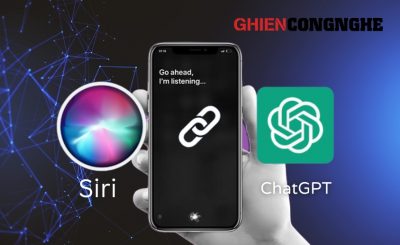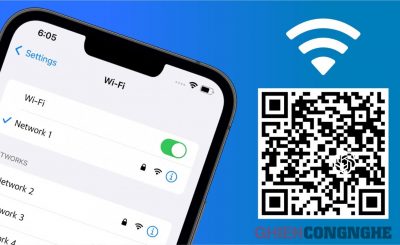Given the large amount of personal data that we keep in our phones, security is essential. Phones always have default encryption, there are many ways to lock and unlock them collectively. Some ways are better for security, some more convenient.
1. Password
- Advantages: Strong passwords are very good security.
- Cons: Not convenient every time you type your password.
- Use when you want the highest level of security for your phone.
Either way, passwords are always the best security for your phone. A strong password is difficult to crack, and your phone will always be safe.
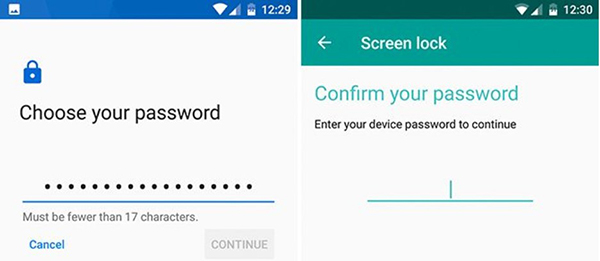
The downside of the password is that you have to type it correctly every time you want to unlock the phone. This is extremely time consuming, especially when we are in a hurry, needing to use the phone immediately. So, you can use the password plus other security options faster.
2. PIN code
- Pros: Easier to enter than passwords.
- Cons: Strong PINs can be difficult to remember.
- Use as a back-up method for other options.
A PIN is a simpler alternative to a password. Android allows creating a PIN up to 16 digits. 16-digit PIN is extremely secure but difficult to remember.
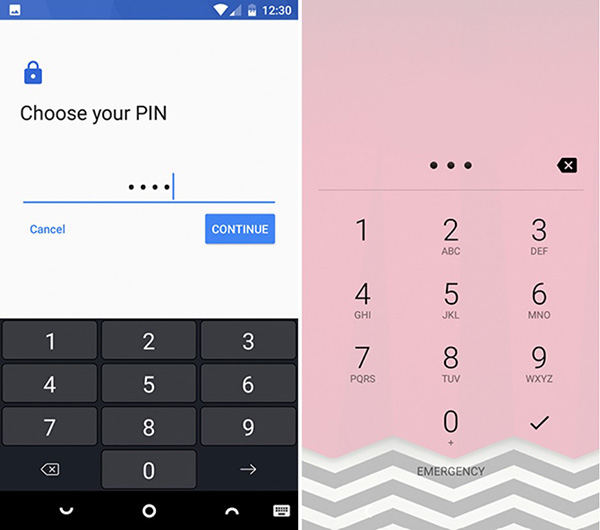
Most people use a 4-digit PIN, but you should not set a PIN like 1234 or 5555.
3. Lock pattern
- Advantages: Simple and creative.
- Cons: Many people create very simple and easy to guess.
- Use without fingerprint scanner and PIN dislike.
Pattern lock requires you to draw a pattern from 9 dots. You can create shapes from lines, horizontal or diagonal. Pattern lock is easy to use and feels natural to want to unlock the screen quickly.
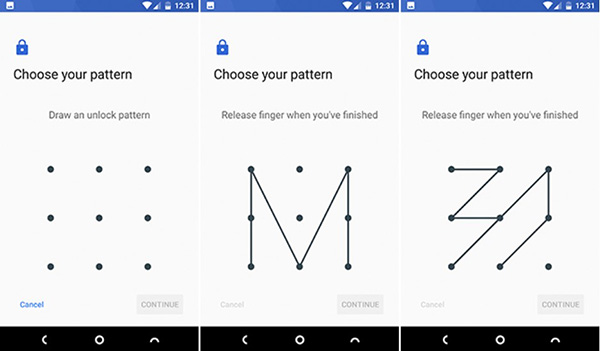
Just like passwords, pattern locks are very secure. With only 4 dots you have 1624 combinations to create a shape. Using all 9 dots, the result will be hundreds of thousands.
Research shows that when creating a lock, people tend to make things that are pretty predictable. People usually only use 4 to 5 dots, derived from the dots at the corners and draw regular shapes. Worse yet, others can easily see what your password shape is. So lock screen is not appreciated for its security.
4. Fingerprint sensor
- Pros: Fast and pretty good security.
- Cons: Sensors don’t work sensitively sometimes.
- Use with most users.
Fingerprint sensors are now too common on smartphones. It is slowly becoming a must-have unlock feature on phones. This is not too difficult to understand. Fingerprint unlock is fast, responsive and highly secure.
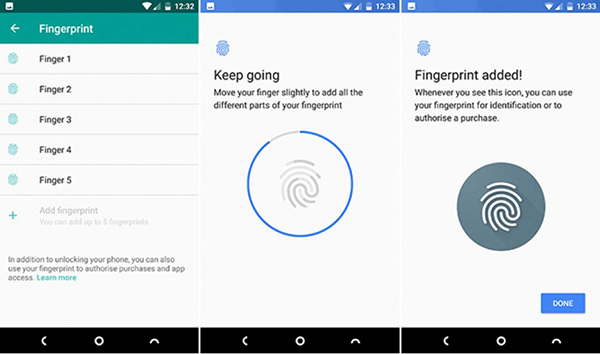
Some phones, like Google’s Pixel series, also support fingerprint operations. You can open the notification bar by swiping the sensor, perfect for large screens that are difficult to use with one hand.
However, not all fingerprint sensors work in the same way. There are more sensitive sensors and not every manufacturer puts them in a convenient place.
5. Face recognition
- Pros: Fast, unlock phone in a blink of an eye.
- Disadvantage: The security is not high.
- Should only be used for unlocking, not recommended for accessing bank accounts or paid apps.
Android first introduced face unlock in 2011. However, it is extremely secure. You can unlock the phone with just one photo, so the Smart Lock feature was born, we will talk about it later. Even so, some manufacturers are adamant with face security.
There are two types of facial recognition. Apple’s Face ID uses an infrared sensor to 3D read details of your face. It still has the potential to be fooled, but Apple claims the facial recognition is 20 times more accurate than the fingerprint sensor.
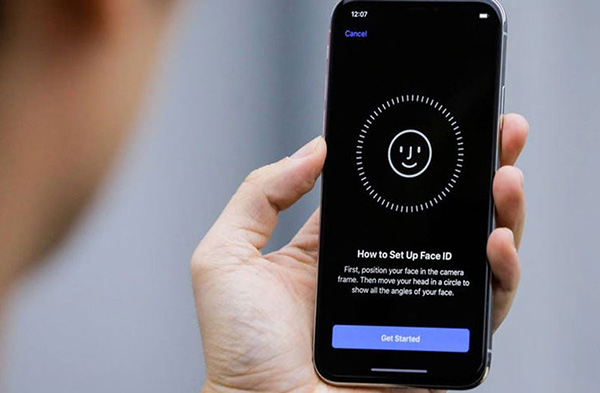
The second method is used on devices like Galaxy S9 and OnePlus 5T: a 2D image captured by the front camera. This method is fast, but the safety is not high. It cannot detect your face when wearing glasses or standing in insufficient light.
6. Scan cornea / iris
- Advantages: One of the safest biometric security methods.
- Cons: Difficult to work in bright light or wearing glasses.
- Use if you prefer fingerprint scanning.
An iris scan is one of the safest biometric security methods, more than just a fingerprint scan. This method will scan both eyes, fast and accurate, safe when using the same applications related to finance, banking.
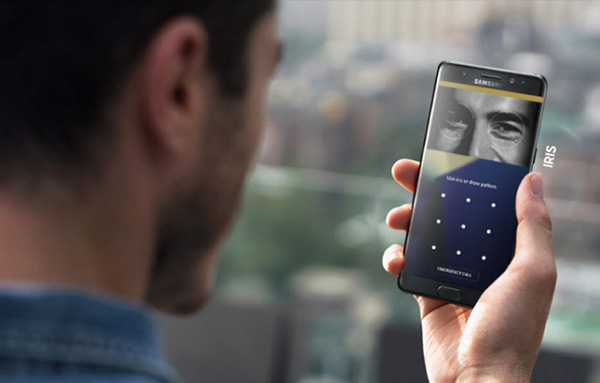
The downside of this approach is that it is quite laborious. You have to press the power button first (unlike when using fingerprints) and have to hold the phone in place to scan your eyes. The iris scan also won’t work if you wear glasses, contact lenses, or in bright light.
7. Intelligent Scan (Intelligent Scan)
- Pros: Combines both face detection and iris scanning.
- Cons: Not secure with financial applications.
- Use if you like facial recognition.
Intelligent Scan is a security system created and used by Samsung on the Galaxy S9. It combines the strengths of facial recognition and iris scanning, bypassing the limitations of both security approaches.
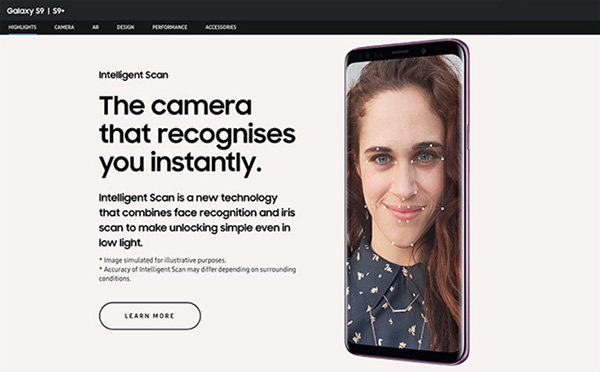
First, the system will scan your face first. If it fails (due to lighting or whatever), it will go into iris scanning. If all else fails, the system scans both. It sounds complicated, but the operation of this method is quite smooth and fast.
8. Smart lock
To add to the main security, Android also provides 5 more smart lock features to make your phone more secure.
- On-Body Detection: This feature helps your phone stay locked if you carry it in your pocket, avoiding it being opened and pressed.
- Trusted Places: This feature will help to open your phone when in certain locations. Be it home, work or school, where you usually go.
- Trusted Devices: When this feature is set up, your phone will be unlocked within a 5m connection with a certain Bluetooth device.
- Trusted Face: This feature has evolved a lot since it was first introduced on Android. However, its level of security has stalled. Trusted Face is convenient enough only if you want to protect your data when your phone is lost.
- Voice Match: This feature allows you to use “OK Google” to unlock the phone. This is a useful option if you use a lot of Google Assistant, or want hands-free access while driving.
Source content: What security method should you use for your phone?
– Techtipsnreview.com

